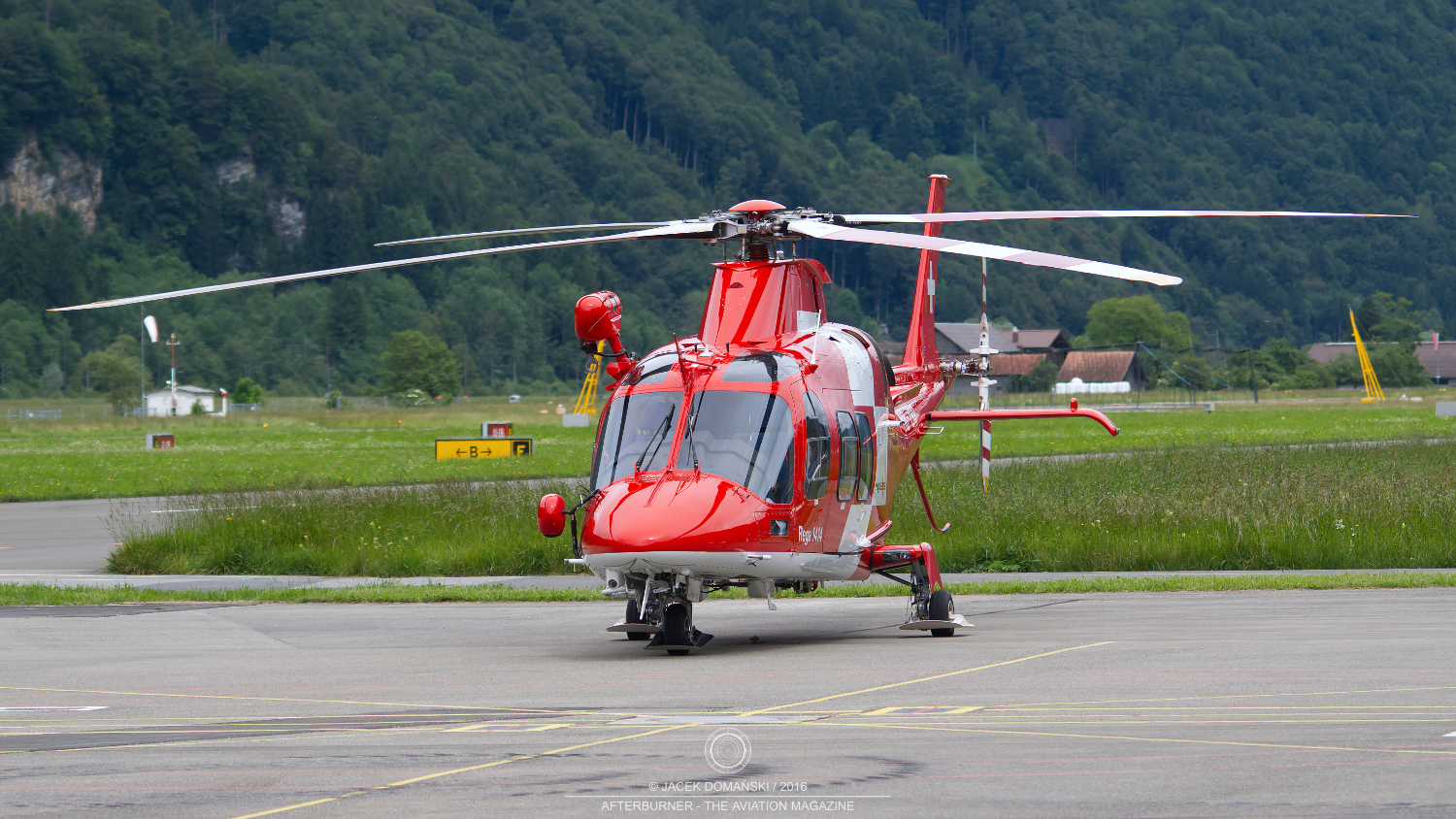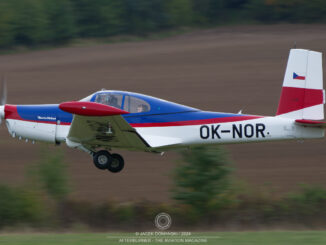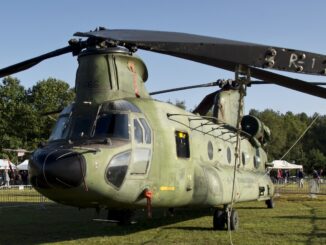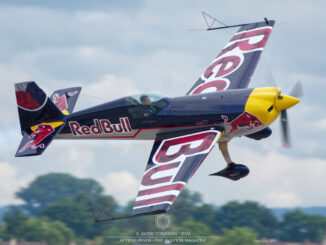 AgustaWestland AW109SP (c/n 22213, HB-ZRP of Schweizerische Luft-Ambulanz AG / Swiss Air Ambulance Ltd.) on static display at the 75th Anniversary of Meiringen Airfield, Meiringen, June 2016.
AgustaWestland AW109SP (c/n 22213, HB-ZRP of Schweizerische Luft-Ambulanz AG / Swiss Air Ambulance Ltd.) on static display at the 75th Anniversary of Meiringen Airfield, Meiringen, June 2016.
The lightweight, multi-purpose Italian rotorcraft, initially known as the A109, was developed by the Agusta company in the late 1960s. The development team aimed to create a versatile helicopter capable of meeting the needs of a broad range of civilian and military customers. This was also the reason why the rotorcraft, although initially designed as a single-engine aircraft, eventually ended as a twin-engine helicopter, powered by Allison Model 250 turboshaft engines.
On 4 August 1971, the first prototype of the A109 successfully performed its maiden flight. Further tests and evaluation flights continued until mid-1975. The following year, the first examples of the new helicopter were delivered to customers.
Initially, the manufacturer focused solely on two civilian variants of the rotorcraft, designated the A109A and the A109C. A military version, the A109B, was also planned but, at that stage of development, was given low priority and never finalised.
Nevertheless, it did not take long before even the A109A found its way into military service. Although designed for civilian operators, the helicopter was acquired by several armed forces and law enforcement agencies around the world. The A109A, for example, was operated by the Italian Police and Guardia di Finanza, as well as by the Argentine Army Aviation, which used it operationally during the Falklands War. A dedicated military version of the rotorcraft, designated the A109A EOA, was later developed for the Italian Army.
In 1988, a dedicated military variant known as the A109BA was designed for the Belgian Army. The helicopter was based on the A109C but, unlike the civil version, was equipped with sliding doors and fixed landing gear. A total of forty-six examples were delivered to Belgium, although the purchase was overshadowed by a corruption scandal. The Agusta company was accused of offering the Belgian authorities a bribe of 50 million BEF to secure the contract. The affair ultimately led to the resignation of the then NATO Secretary General and the former Belgian deputy prime minister, Willy Claes.
However, the bribery scandal did not affect the future sales of the A109 family. In a short time, further military variants were developed and acquired by the US Coast Guard, the South African Air Force, the Swedish Army, the Royal New Zealand Air Force, the Philippine Air Force and Navy, as well as by several other military operators worldwide.
The civilian variants of the A109 became popular among emergency services and air ambulance companies, as well as were used for air charter and VIP transport duties. Moreover, the upgraded E and SP GrandNew variants were purchased by the British authorities and assigned to No. 32 Squadron of the Royal Air Force for the transportation of government officials and members of the British Royal Family.
It is worth noting that in 2008, the helicopter broke several world records in its rotorcraft class. During a round-the-world flight, the AW109S Grand, piloted by Scott Kasprowicz and Steve Sheik, set new records for speed around the world, eastbound speed around the world, and speed over a recognised course. The rotorcraft completed the journey in 11 days, 7 hours and 2 minutes, at an average speed of 136.7 kph. All these records have been officially ratified and remain current.
At the beginning of the new century, following the merger of Agusta and Westland, the helicopter was renamed the AW109. In 2016, AgustaWestland was acquired by Leonardo and became its helicopter division, known as Leonardo Helicopters. Modern, upgraded variants of the A109 remain in the company’s portfolio, including the AW109 GrandNew, the AW109 Trekker and its military version, the AW109 TrekkerM.
The HB-ZRP helicopter, featured in our Photo of the Week series, represents the AW109SP variant, developed from the aforementioned AW109S Grand. The rotorcraft is powered by two Pratt & Whitney Canada PW200 turboshaft engines and has a modified main rotor and transmission. Its maximum take-off weight has been increased to 3,175 kg.
Since 2009, AW109 search-and-rescue and MedEvac helicopters are being operated by the Swiss Air Rescue Guard (REGA), locally designated the AW109 Da Vinci. According to the company’s website, all helicopters of this type are to be retired by 2026 and replaced with Airbus H145 helicopters.



